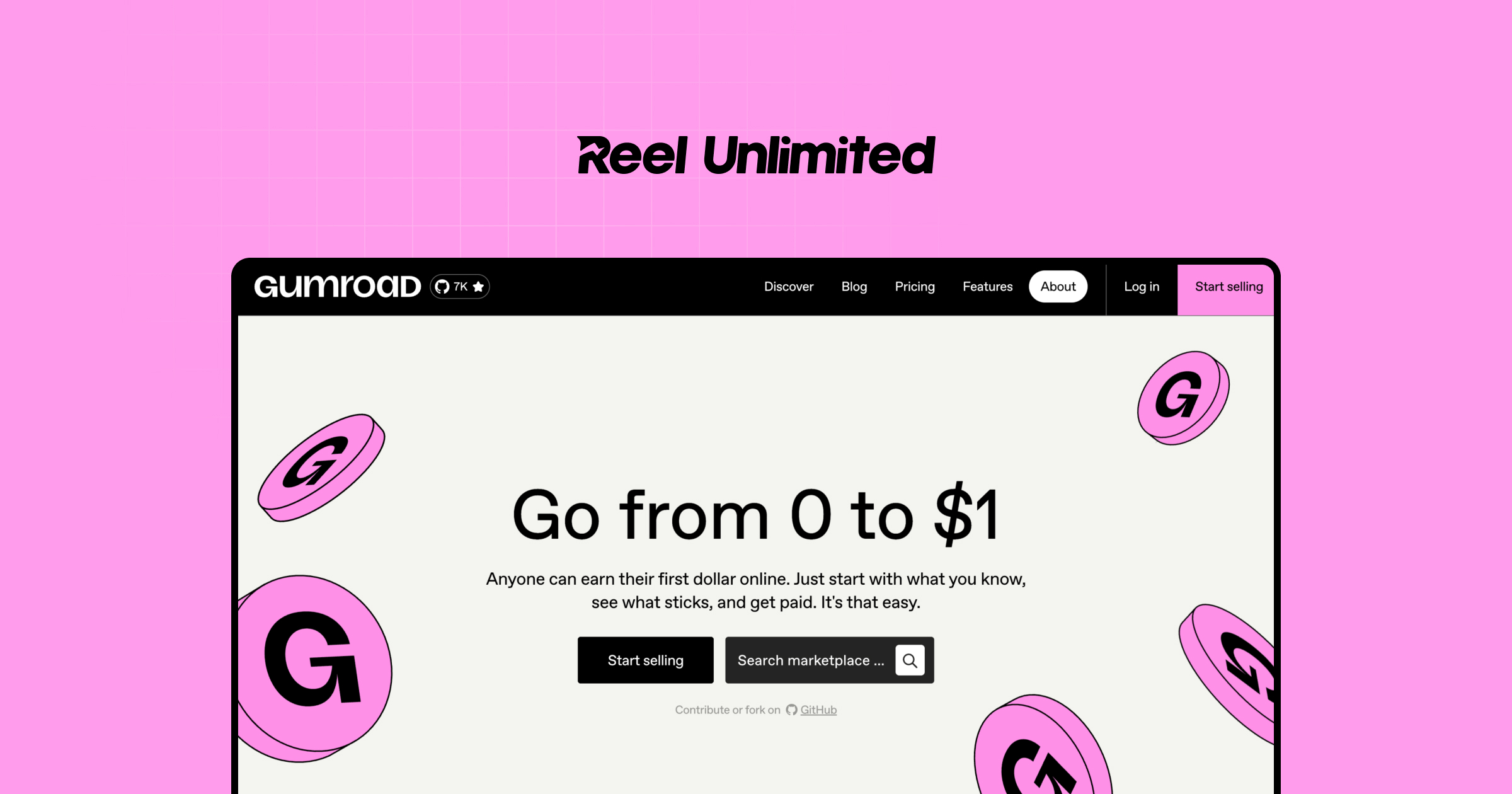Welcome to another Reel Unlimited blog, Reel Unlimited is a design subscription service for startups and agencies serving tech clients who need professional design quality that competes in sophisticated markets. We provide unlimited graphic design, video editing, and Webflow development for businesses that can’t afford expensive agencies but need design quality that matches their competitive environment. In this article, we’ll explore Gumroad alternatives and review the best platforms for different types of digital creators. If you’re looking for design or website development services, stick around until the end – we have a special 25% discount offer for new clients.
Digital creators face a frustrating reality: finding a platform that doesn’t eat into their profits while providing the tools they need to sell effectively. When Gumroad increased their fees to a flat 10% on all transactions in late 2022, thousands of creators started looking for alternatives that better match their business needs and profit margins.
The digital marketplace landscape now offers better options for different creator types. Solo artists selling occasional digital prints need different capabilities than agencies managing multiple client accounts or course creators building membership communities. The key is understanding which platform serves your specific business model rather than choosing based on marketing promises.
This review examines the 10 best Gumroad alternatives based on who they actually serve best. We’ll cover platforms for independent creators, established course sellers, agencies needing client management, and everything in between. Each platform excels for different business types, and we’ll help you identify which fits your actual needs rather than what sounds impressive in marketing copy.
Understanding Digital Creator Platform Differences
Before diving into alternatives, it’s important to understand that creator platforms serve different business models. Some optimize for individual creators selling digital art or PDFs, others focus on course creators building education businesses, and some serve agencies managing multiple clients.
Transaction fees, customization options, and built-in marketing tools vary significantly based on the platform’s target market. A platform charging 8% but providing community features might work better for membership creators than a 3% platform with basic checkout pages. The goal is finding the platform that matches your business stage and growth plans.
Best Gumroad Alternatives for Digital Creators
1. ProRequests
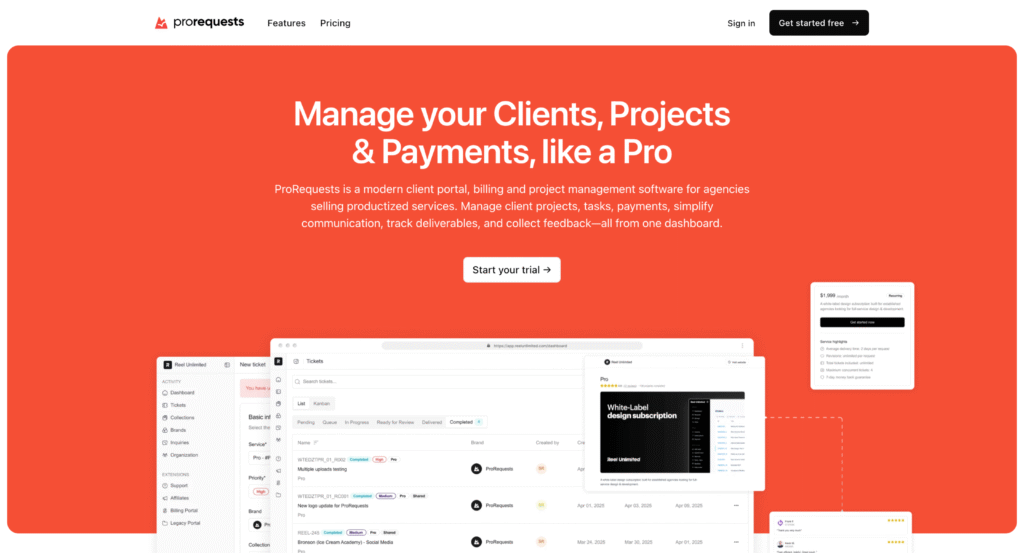
Best for Agencies and Service-Based Creators
ProRequests serves a unique position in the creator economy by focusing specifically on agencies and service-based creators who need client management alongside selling capabilities. Built by the team behind Reel Unlimited, ProRequests understands the specific needs of creative professionals serving business clients.
The platform combines client portal functionality with CRM features, allowing agencies to manage client relationships, project communications, and billing in one centralized location. The white-label capabilities enable agencies to maintain their brand while using ProRequests’ infrastructure for client interactions.
Key Features:
- White-labeled client portal with custom branding
- Integrated CRM for client relationship management
- Project management and secure file sharing
- Custom inquiry forms and lead capture tools
- Built-in billing and payment processing
- Client communication tracking and history
Pricing: Free until your agency reaches $10,000 in monthly revenue, then $79/month. This aligns the platform’s success with your business growth.
Best For: Creative agencies, consultants, and service-based creators who need professional client management tools alongside selling capabilities.
2. Checkout Page
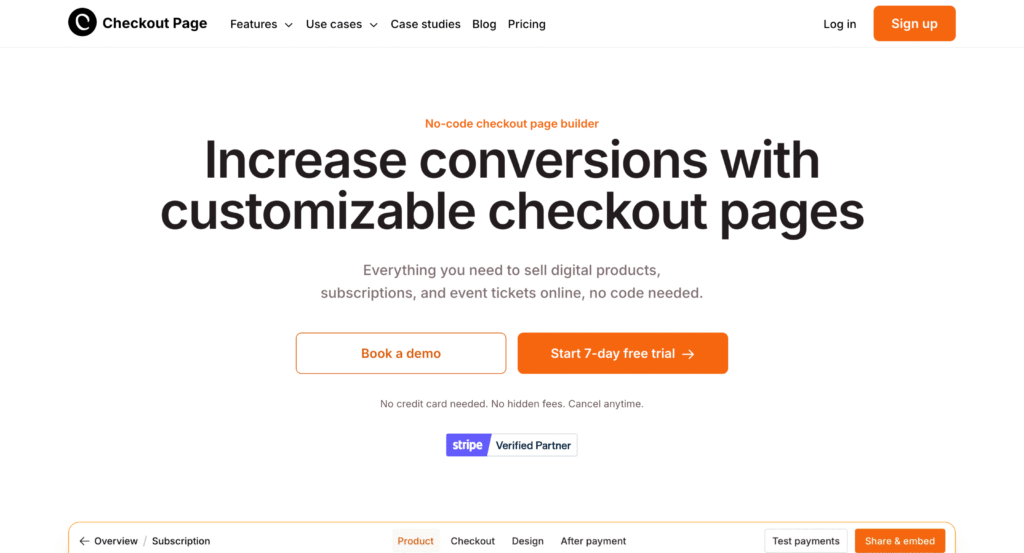
Checkout Page lets people create fully customizable, branded checkout pages for selling digital products, event tickets, and subscriptions. It empowers people to take complete control of creating a seamless customer checkout experience, regardless of their technical skills.
Checkout Page has many features designed to boost conversion rates, such as one-click upsells, order bumps, and discount codes. It also makes it super simple to set up payment plans, pay as you choose, and a range of billing options, so that you can remove barriers to purchase for your customers. Simply connect your Stripe account, and you can start selling within minutes from your website, standalone hosted pages, social media links, or QR codes.
Checkout Page Pricing
Checkout Page’s pricing is refreshingly simple, with no hidden charges or fees. You simply pay a monthly subscription based on the amount of funds you process. The pricing structure is as follows:
| Plan | Cost | Transaction fees |
| Launch | $29/month (up to $3K sales volume) $24/month if paid annually | 0% |
| Grow | $99/month (up to $10K sales volume) $83/month if paid annually | 0% |
| Scale | $239/month (up to $30K sales volume) $199/month if paid annually | 0% |
Stripe will charge payment processing fees for each transaction made through your checkout.
How do creators get paid?
Any funds processed via a Checkout Page checkout are immediately deposited into the creator’s Stripe account, where they can be accessed as needed. As noted above, Stripe will charge their standard processing fee.
Best option for:
Creators who value true independence, in terms of customization, branding, page setup, and features designed to convert. It’s also one of the best choices for creators wanting total clarity on fees and costs from their platform.
Checkout Page pros
- Create fully customizable checkout pages; no coding skills required.
- Predictable monthly subscription and no added fees.
- Fully customizable pages to match your branding
- No intermediary; all your funds and customer data stay in Stripe
- Create custom billing models, e.g., one-time payments, pay in installments, paid trials, free trials, and more
- Top-notch, founder-led customer support
Checkout Page cons
- Unlike marketplaces, you don’t get a built-in audience
- No free plan
3. Sellfy
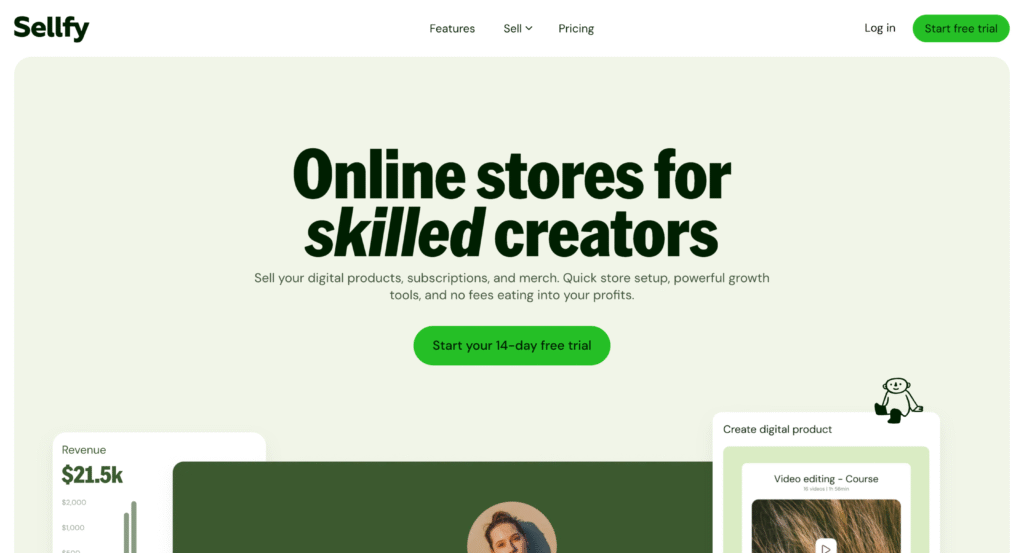
Sellfy specializes in digital product sales with a particular strength in print-on-demand services. The platform handles the entire print-on-demand process, from printing to delivery, without requiring upfront inventory investment from creators.
The drag-and-drop storefront customization sets Sellfy apart from more template-based competitors. Creators can build unique storefronts or integrate their existing websites with Sellfy’s selling infrastructure.
Key Features:
- Complete print-on-demand handling
- Drag-and-drop storefront customization
- Email marketing tools and discount codes
- Digital product delivery automation
- Analytics and sales tracking
- Mobile app for management
Pricing: Free plan available with limitations. Paid plans: Starter ($29/month), Business ($79/month), Premium ($159/month).
Best For: Digital artists, designers selling print-on-demand, and creators wanting customizable storefronts.
4. Podia
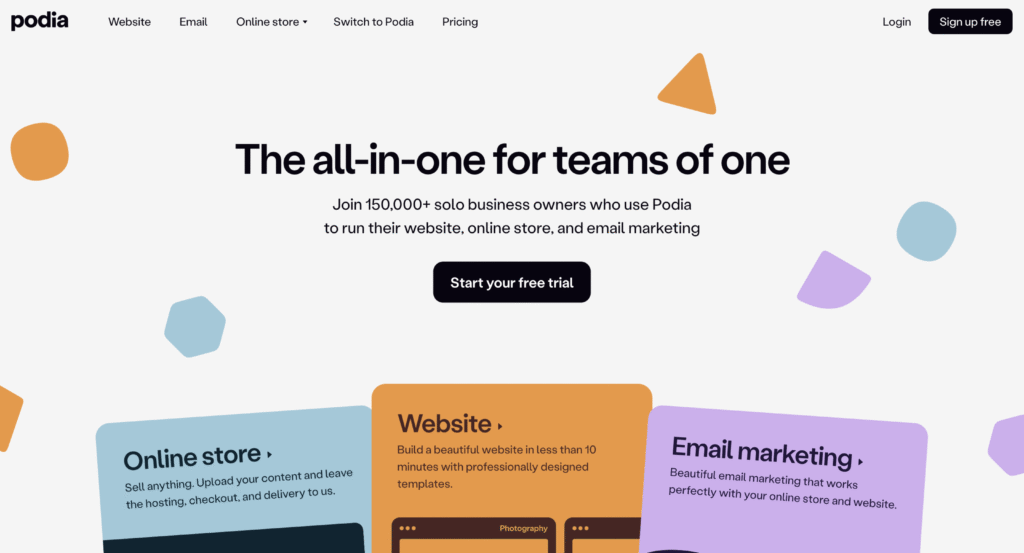
Podia excels at serving educators and creators building learning communities. The platform’s strength lies in video hosting, course creation tools, and community features that enable creators to build deeper relationships with their audience.
Unlimited bandwidth and hosting make Podia particularly valuable for creators using extensive video content in courses, coaching sessions, and workshops.
Key Features:
- Course creation and hosting tools
- Community building features
- Unlimited video hosting and bandwidth
- Email marketing integration
- Affiliate program management
- Coaching and consultation scheduling
Pricing: Podia Email is free. Paid plans: Mover ($33/month, plus 5% transaction fees), Shaker ($75/month, no transaction fees)
Best For: Course creators, coaches, and educators building learning communities around their expertise.
5. Patreon
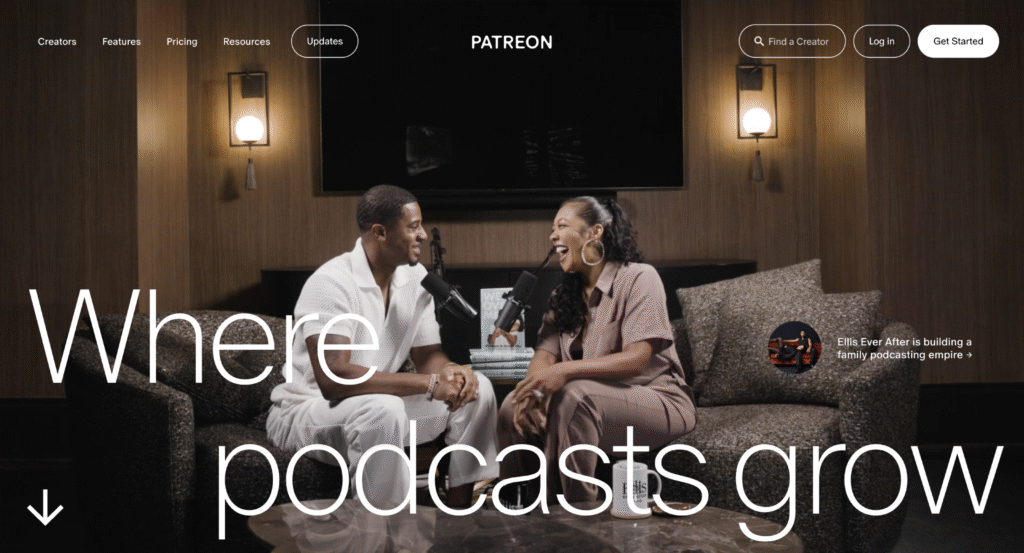
Patreon pioneered the creator subscription model, enabling artists, podcasters, and content creators to build recurring revenue through fan support. The platform excels at community building and providing creators with predictable monthly income.
The subscription model works particularly well for creators producing regular content like podcasts, videos, art, or writing who want to build long-term relationships with supporters.
Key Features:
- Subscription-based fan support
- Tiered membership options
- Community building tools
- Content scheduling and delivery
- Analytics and fan insights
- Integration with creative tools
Pricing: Patreon is free to start, you only pay 10% when you start earning.
Best For: Content creators, artists, and podcasters building subscription-based businesses with regular content.
6. Ko-fi
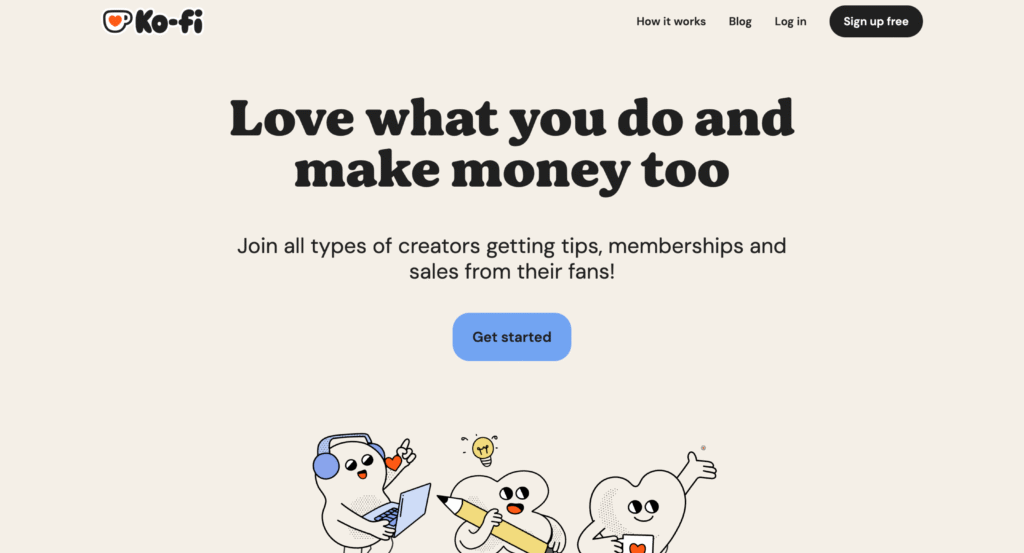
Ko-fi provides the simplest entry point for creators wanting to receive support without complex setup requirements. The platform’s “no-pressure” approach appeals to creators who don’t want to commit to regular content schedules.
The 0% fee structure on basic features makes Ko-fi particularly attractive for creators just starting to monetize their work.
Key Features:
- Simple tip jar functionality
- Membership and shop options (Gold tier)
- Commission management
- Goal setting and crowdfunding
- Integration with streaming platforms
- Direct PayPal/Stripe integration
Pricing: Free + 5% service fee for basic features. Ko-fi Gold: $12/month for advanced features.
Best For: New creators, artists seeking tips and donations, streamers and content creators wanting simple monetization.
7. PayHip
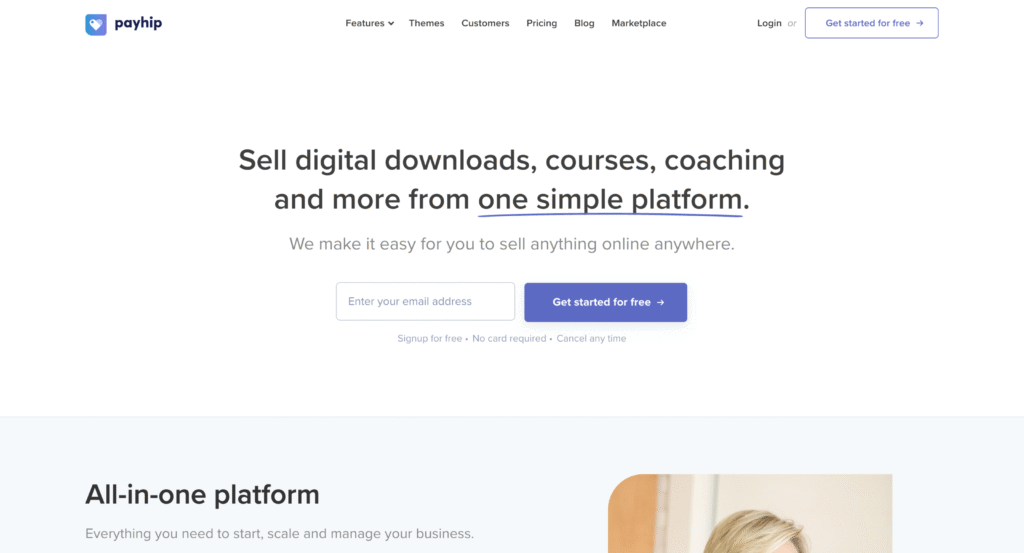
PayHip accommodates creators selling both digital and physical products, making it unique among primarily digital-focused platforms. The platform’s conversion optimization and customization options provide more control than template-based alternatives.
Key Features:
- Digital and physical product sales
- Storefront customization options
- Marketing and promotion tools
- Instant payment access
- Membership and course selling
- Lower transaction fees on paid plans
Pricing: Free (5% transaction fee), Plus ($29/month + 2%), Pro ($99/month + 0%).
Best For: Creators selling mixed product types, small businesses needing both digital and physical product capabilities.
8. Buy Me a Coffee
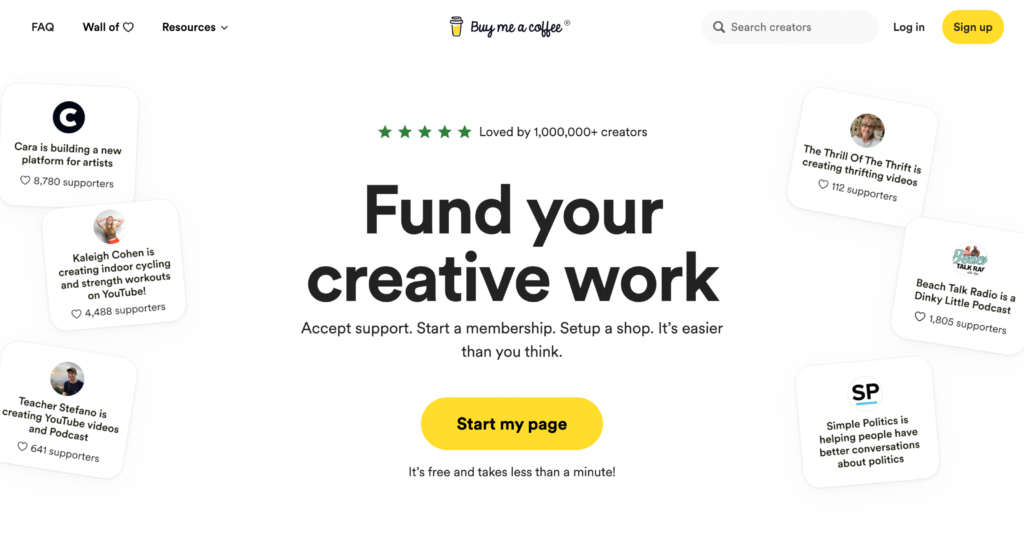
Buy Me a Coffee emphasizes human connections over pure transactions, making it appealing for creators wanting to build genuine relationships with supporters. The platform enables creators to offer exclusive content and experiences.
Key Features:
- Community building focus
- Exclusive content sharing
- Simple supporter interaction
- Membership capabilities
- Live event and consultation sales
- WordPress plugin integration
Pricing: Free to use with 5% transaction fee.
Best For: Creators prioritizing community building, writers, artists wanting personal connections with supporters.
10. SendOwl
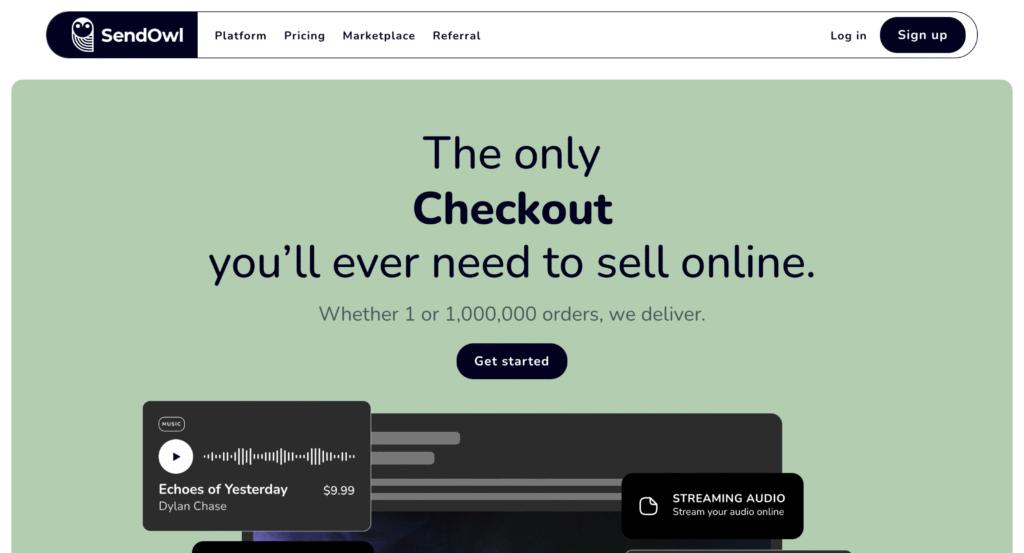
SendOwl excels at integrating with existing websites and marketing tools rather than providing a standalone marketplace. This makes it valuable for creators who already have established websites and audiences.
Key Features:
- Website and tool integrations
- Automated digital delivery
- Customizable checkout processes
- Email marketing automation
- Bundle and upsell options
- Analytics and reporting
Pricing: Starter $39/month, Standard $87/month and Pro $159/month.
Best For: Bloggers, YouTubers, and creators with existing websites who need selling capabilities without changing their current setup.
How Creator Platform Success Requires Professional Design Assets
Your chosen platform handles the selling process, but competing in today’s creator economy requires professional design assets that match the quality your audience expects. Whether you’re creating course materials, social media content, or marketing websites, design quality directly impacts audience perception and conversion rates.
Many successful creators track their metrics effectively through these platforms but struggle to create the professional visual content needed to compete against well-funded competitors. Course thumbnails, social media graphics, landing pages, and brand materials determine whether potential customers perceive your content as professional or amateur.
Reel Unlimited works with digital creators, course sellers, and creative agencies who need design quality that competes in sophisticated markets. We understand that your platform insights are valuable, but converting those insights into growth requires professional creative assets that match your competitive environment.
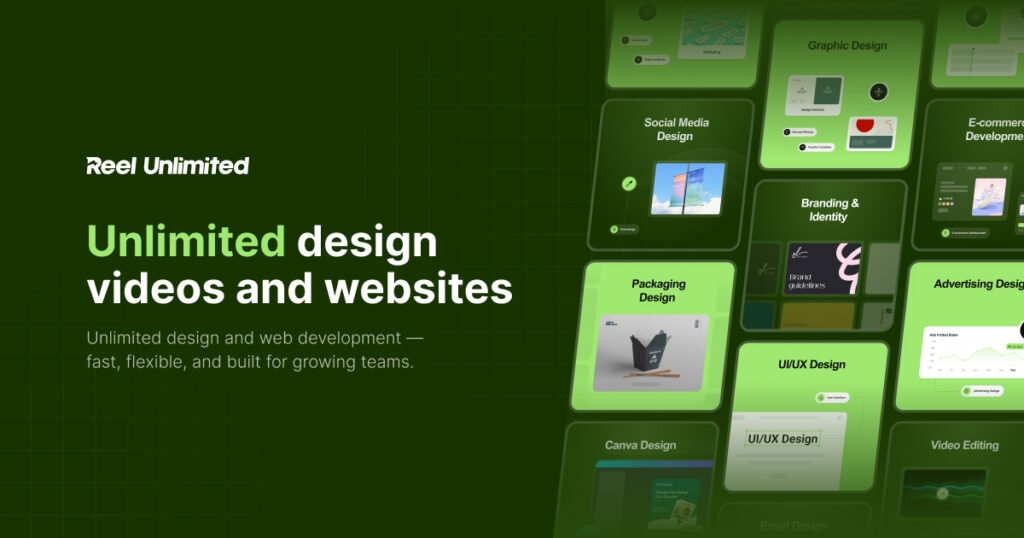
Our Services for Creator Businesses:
Graphics Service ($795/month): Unlimited graphic design and video editing for course materials, social media content, marketing graphics, and brand assets. Perfect for creators needing consistent visual quality across all platforms.
Websites Service ($1,295/month): Complete Figma design plus Webflow development for creator websites, landing pages, and sales funnels. Essential for creators building professional online presence.
Bundle Service ($1,995/month): Both services combined at a discounted rate, providing everything needed for comprehensive creator business growth.
Service Options:
- Monthly subscriptions for ongoing content creation
- 30-day packages for intensive project launches
- 7-day trial with one completed project
We’ve worked with course creators building multi-six-figure education businesses, creative agencies serving enterprise clients, and SaaS companies needing professional marketing assets. Our team understands the design quality required to compete in professional markets while maintaining pricing that makes sense for growing creator businesses.
Choosing the Right Gumroad Alternative for Your Creator Business
The best platform depends on your specific creator business model rather than generic feature comparisons. Course creators need different capabilities than tip-based artists, and agencies require client management tools that individual creators don’t need.
Choose Based on Your Business Type:
For Independent Digital Artists: Sellfy or Ko-fi provide simple selling with customization options.
For Course Creators: Podia offers the video hosting and community features education businesses require.
For Subscription Creators: Patreon’s recurring revenue model and community tools support ongoing content creation.
For Agencies and Service Providers: ProRequests provides the client management and professional features service businesses need.
Transform your creator platform capabilities into competitive advantages with professional design assets. Whether you need course materials that compete against established education brands, marketing websites that convert visitors into customers, or brand materials that represent your creative business professionally, design quality matters in today’s competitive creator economy.
Special Offer for Our Readers: As promised, if you’re looking for design or website development services, we’re offering 25% off your first month for new Reel Unlimited clients. Start your 7-day trial to experience design quality that matches your business’s competitive standards, or explore our pricing with code BLOG25 to see which service best supports your creator business growth.
What You Get: Unlimited graphic design and video editing ($795/month), complete Webflow development ($1,295/month), or both services combined ($1,995/month). All plans include your 7-day trial with one completed project, so you can evaluate our quality before any commitment.
